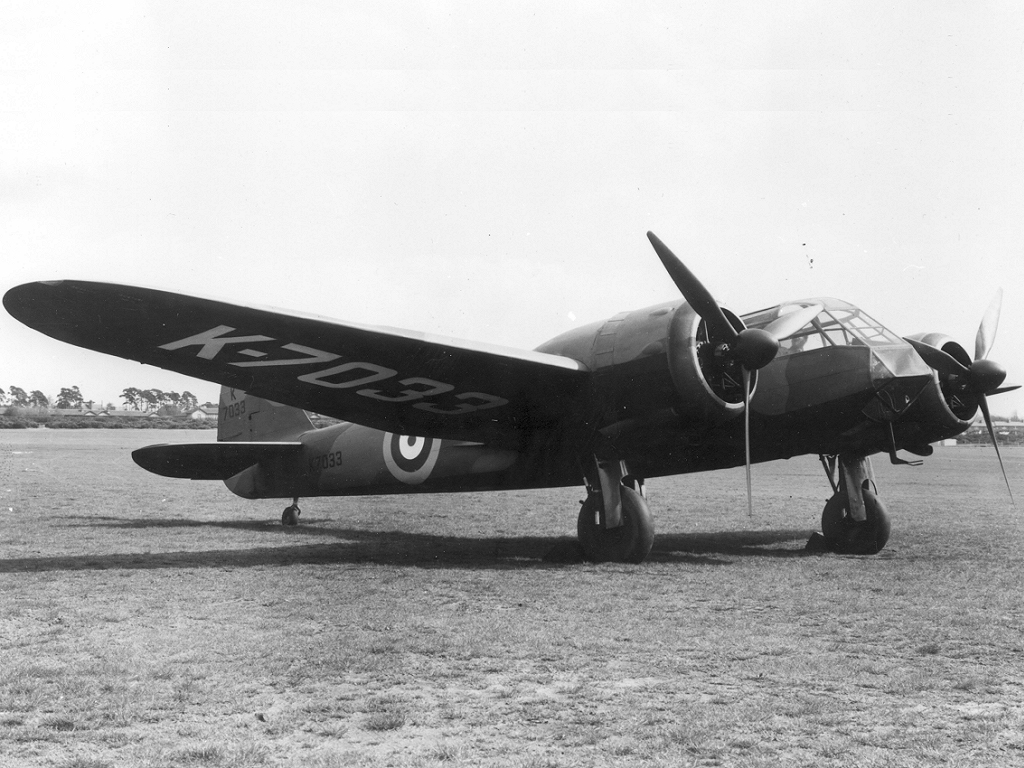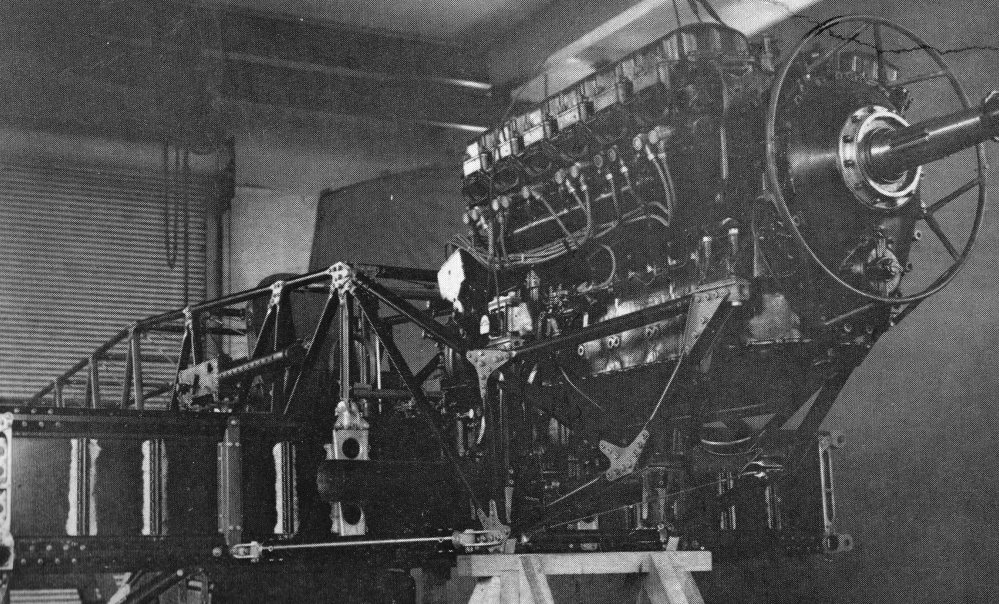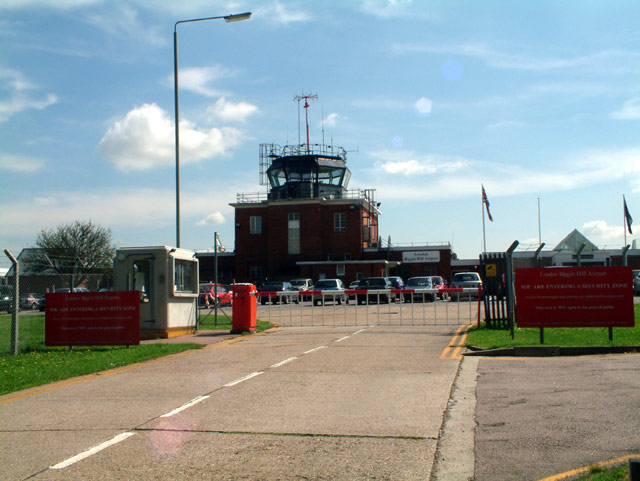|
RAF Gravesend
Gravesend Airport, located southeast of Gravesend town centre, Kent and west of Rochester. It was operated from 1932 until 1956. It was initially a civil airfield, and became a Royal Air Force station known as RAF Gravesend during the Second World War, when it was under the control of RAF Fighter Command during the Battle of Britain. It was the first RAF station to operate the North American Mustang III. The airport returned to civilian use at the conclusion of the Second World War, although it remained under the ownership of the Air Ministry until its closure in 1956. Civil operation The airport was operated by Gravesend Aviation Ltd served Gravesend and has a significant place in the history of British aviation. From 1933 to 1936 it was home to Percival Aircraft, building the famous Mew Gull racing aircraft among others, before the company moved to Luton. After 1936 Essex Aero was based on the site, and maintained the airfield's link with racing aeroplanes by preparing the ... [...More Info...] [...Related Items...] OR: [Wikipedia] [Google] [Baidu] |
Gravesend
Gravesend is a town in northwest Kent, England, situated 21 miles (35 km) east-southeast of Charing Cross (central London) on the Bank (geography), south bank of the River Thames, opposite Tilbury in Essex. Located in the diocese of Rochester, it is the administrative centre of the borough of Gravesham. Gravesend marks the eastern limit of the Greater London Built-up Area, as defined by the UK Office for National Statistics. It had a population of 58,102 in 2021. Its geographical situation has given Gravesend strategic importance throughout the maritime history, maritime and History of communication, communications history of South East England. A Thames Gateway commuter town, it retains strong links with the River Thames, not least through the Port of London Authority Pilot Station, and has witnessed rejuvenation since the advent of High Speed 1 rail services via Gravesend railway station. The station was recently refurbished and has a new bridge. Name Recorded as Graves ... [...More Info...] [...Related Items...] OR: [Wikipedia] [Google] [Baidu] |
Imperial Airways
Imperial Airways was an early British commercial long-range airline, operating from 1924 to 1939 and principally serving the British Empire routes to South Africa, India, Australia and the Far East, including Malaya and Hong Kong. Passengers were typically businessmen or colonial administrators, and most flights carried about 20 passengers or fewer. Accidents were frequent: in the first six years, 32 people died in seven incidents. Imperial Airways never achieved the levels of technological innovation of its competitors and was merged into the British Overseas Airways Corporation (BOAC) in 1939. BOAC in turn merged with the British European Airways (BEA) in 1974 to form British Airways. Background The establishment of Imperial Airways occurred in the context of facilitating British colonialism by making travel to and from the colonies quicker than travel by ship. Air travel would speed up both colonial government and trade. The launch of the airline followed a burst of air ro ... [...More Info...] [...Related Items...] OR: [Wikipedia] [Google] [Baidu] |
401 Tactical Fighter Squadron
No. 401 Tactical Fighter Squadron , a.k.a. "City of Westmount" Squadron (originally No. 1 Squadron), is a Royal Canadian Air Force squadron based at CFB Cold Lake. During World War II it was a fighter squadron and is notable for having fought in the Battle of Britain. Postwar, the squadron operated in Canada as an auxiliary squadron, reserve squadron and a helicopter and training squadron. In 2015 it was reactivated as a tactical fighter squadron, flying the McDonnell Douglas CF-18 Hornet. History Formation No. 1 Squadron Royal Canadian Air Force was formed as a fighter unit at Trenton, Ontario, on 21 September 1937 with Siskin aircraft. The squadron was formed from the Fighter Flight of No. 3 (Bomber) Squadron. In August 1938, the squadron moved to Calgary, Alberta, and was re-equipped with Hawker Hurricane aircraft in February 1939. While stationed in Calgary, the squadron was commanded by Squadron Leader Elmer Garfield Fullerton. It was mobilized at ... [...More Info...] [...Related Items...] OR: [Wikipedia] [Google] [Baidu] |
350th Squadron (Belgium)
The 350th Squadron (, ) is a Fighter aircraft, fighter squadron (aviation), squadron in the Belgian Air Force, Air Component of the Military of Belgium, Belgian Armed Forces. It was originally formed in 1941 as No. 350 (Belgian) Smaldeel of the Royal Air Force during World War II. The unit was transferred to the Belgian Air Force, together with 349th Squadron (Belgium), 349th Squadron, in 1946. Based at Florennes Air Base, Florennes air base, the unit is now part of the 2nd Tactical Wing and operates F-16 Fighting Falcons. History With the Royal Air Force No. 350 Squadron, the first Royal Air Force squadron to be formed by Belgian personnel, was formed during World War II at RAF Valley in the United Kingdom in November 1941. The squadron operated the Supermarine Spitfire at first on convoy protection duties over the Irish Sea, relocating to RAF Atcham in early 1942. In April 1942 the squadron moved to RAF Debden and carried out offensive operations over France. The squadron moved ... [...More Info...] [...Related Items...] OR: [Wikipedia] [Google] [Baidu] |
Airfields Of Britain Conservation Trust
The Airfields of Britain Conservation Trust (ABCT), founded 2006, is a non-profit organisation that works to preserve and protect airfields in Great Britain, as well as educating people about their history. The Trust is a registered charity. They place inscribed memorial stones on or near disused airfields, which have included a memorial at Fambridge, Essex in February 2009, at Windermere in Cumbria in 2011 and at Montrose Air Station Heritage Centre in May 2012. Other memorial locations include Harrowbeer, Hatfield, Lanark, Leavesden, Matlaske, Okehampton, Podington Podington is a village and civil parishes in England, civil parish in Bedfordshire, England, United Kingdom. The village is within the Wards of the United Kingdom, electoral ward of Harrold, Bedfordshire, Harrold in the Borough of Bedford. Podi ..., Swannington, Westcott and Woburn Park. References External links * Charities based in Glasgow Conservation in the United Kingdom Aviation histor ... [...More Info...] [...Related Items...] OR: [Wikipedia] [Google] [Baidu] |
Heinkel He 111
The Heinkel He 111 is a German airliner and medium bomber designed by Siegfried and Walter Günter at Heinkel Flugzeugwerke in 1934. Through development, it was described as a wolf in sheep's clothing. Due to restrictions placed on Germany after the First World War prohibiting bombers, it was presented solely as a civil airliner, although from conception the design was intended to provide the nascent Luftwaffe with a heavy bomber. Perhaps the best-recognised German bomber of World War II due to the distinctive, extensively glazed "greenhouse" nose of the later versions, the Heinkel He 111 was the most numerous Luftwaffe bomber during the early stages of the war. It fared well until it met serious fighter opposition during the Battle of Britain, when its defensive armament was found to be inadequate. As the war progressed, the He 111 was used in a wide variety of roles on every front in the European theatre. It was used as a strategic bomber during the Battle of Britain, a to ... [...More Info...] [...Related Items...] OR: [Wikipedia] [Google] [Baidu] |
Dieppe Raid
Operation Jubilee or the Dieppe Raid (19 August 1942) was a disastrous Allied amphibious attack on the German-occupied port of Dieppe in northern France, during the Second World War. Over 6,050 infantry, predominantly Canadian, supported by a regiment of tanks, were put ashore from a naval force operating under the protection of Royal Air Force (RAF) fighters. The port was to be captured and held for a short period, to test the feasibility of a landing and to gather intelligence. German coastal defences, port structures and important buildings were to be demolished. The raid was intended to boost Allied morale, to demonstrate the commitment of the United Kingdom to re-open the Western Front, and to support the Soviet Union, which was fighting on the Eastern Front. The made a maximum effort against the landing as the RAF had expected, and the RAF lost 106 aircraft (at least 32 to anti-aircraft fire or accidents) against 48 German losses. The Royal Navy lost 33 landing craft ... [...More Info...] [...Related Items...] OR: [Wikipedia] [Google] [Baidu] |
James Harry Lacey
James Harry Lacey, (1 February 1917 – 30 May 1989), known as Ginger Lacey, was one of the top scoring Royal Air Force fighter pilots of the Second World War and was the second-highest scoring RAF fighter pilot of the Battle of Britain, behind Pilot Officer Eric Lock of No. 41 Squadron RAF. Lacey was credited with 28 enemy aircraft destroyed, five probables and nine damaged. Early life Lacey was born on 1 February 1917 in Wetherby, West Yorkshire. He left King James Grammar School, Knaresborough"Fighter Aces of the RAF" by ECR Baker, published William Kimber 1962, 450017109 in 1933, and continued his education at Leeds Technical College. He spent four years as an apprentice pharmacist in Leeds. RAF career Lacey joined the RAFVR (Royal Air Force Volunteer Reserve) in January 1937 as a trainee pilot at Perth, Scotland. In 1938, he then took an instructor's course, becoming an instructor at the Yorkshire Flying School, accumulating 1,000 hours of flight time before the war. ... [...More Info...] [...Related Items...] OR: [Wikipedia] [Google] [Baidu] |
Bristol Blenheim
The Bristol Blenheim is a British light bomber designed and built by the Bristol Aeroplane Company, which was used extensively in the first two years of the Second World War, with examples still being used as trainers until the end of the war. Development began with the ''Type 142'', a civil airliner, after a challenge from the newspaper proprietor Harold Harmsworth, 1st Viscount Rothermere, Lord Rothermere to produce the fastest commercial aircraft in Europe. The ''Type 142'' first flew in April 1935, and the Air Ministry, ordered a modified design as the ''Type 142M'' for the Royal Air Force (RAF) as a bomber. Deliveries of the new Blenheim to RAF squadrons commenced on 10 March 1937. In service the Type 142M became the Blenheim Mk.I which would be developed into the long-nosed Type 149, the Blenheim Mk.IV, except in Canada where Fairchild Canada built the Type 149 under licence as the Bolingbroke. The Type 160 Bisley was also developed from the Blenheim but was already obsol ... [...More Info...] [...Related Items...] OR: [Wikipedia] [Google] [Baidu] |
Hawker Hurricane
The Hawker Hurricane is a British single-seat fighter aircraft of the 1930s–40s which was designed and predominantly built by Hawker Aircraft Ltd. for service with the Royal Air Force (RAF). It was overshadowed in the public consciousness by the Supermarine Spitfire during the Battle of Britain in 1940, but the Hurricane inflicted 60% of the losses sustained by the ''Luftwaffe'' in the campaign, and fought in all the major theatres of the Second World War. The Hurricane originated from discussions between RAF officials and aircraft designer Sir Sydney Camm about a proposed monoplane derivative of the Hawker Fury biplane in the early 1930s. Despite an institutional preference for biplanes and lack of interest by the Air Ministry, Hawker refined its monoplane proposal, incorporating several innovations which became critical to wartime fighter aircraft, including retractable landing gear and the more powerful Rolls-Royce Merlin engine. The Air Ministry ordered Hawker's ''Interce ... [...More Info...] [...Related Items...] OR: [Wikipedia] [Google] [Baidu] |
London Biggin Hill Airport
London Biggin Hill Airport is a minor Commercial aviation, commercial airport serving Biggin Hill in the London Borough of Bromley, located south-southeast of Central London. It specialises in general aviation, handling a spectrum of traffic from private aviation to large business jets. It currently has no scheduled airline service, as flights using the airport are not regularly permitted to carry fare-paying passengers. The airport was formerly a Royal Air Force station RAF Biggin Hill, and a small enclave on the airport still retains that designation. Biggin Hill is best known for its role during the Battle of Britain in the World War II, Second World War, when it served as one of the principal fighter aircraft, fighter bases protecting London and South East England from attack by Nazi Germany, German Luftwaffe bombers. Over the course of the war, fighters based at Biggin Hill claimed 1,400 enemy aircraft, at the cost of the lives of 453 Biggin Hill based aircrew. The airp ... [...More Info...] [...Related Items...] OR: [Wikipedia] [Google] [Baidu] |
Hawker Hart
The Hawker Hart is a British two-seater biplane light bomber aircraft that saw service with the Royal Air Force (RAF). It was designed during the 1920s by Sydney Camm and manufactured by Hawker Aircraft. The Hart was a prominent British aircraft in the inter-war period, but was obsolete and already side-lined for newer monoplane aircraft designs by the start of the Second World War, playing only minor roles in the conflict before being retired. Several major variants of the Hart were developed, including a navalised version for the Royal Navy's aircraft carriers. Beyond Britain, the Hart would be operated by a number of foreign nations, including Sweden, Yugoslavia, Estonia, South Africa, and Canada. Design and development In 1926, the Air Ministry stated a List of Air Ministry Specifications#1920-1929, requirement for a two-seat high-performance light day-bomber, to be of all-metal construction and with a maximum speed of 160 mph (258 km/h). Designs were tendered by ... [...More Info...] [...Related Items...] OR: [Wikipedia] [Google] [Baidu] |






